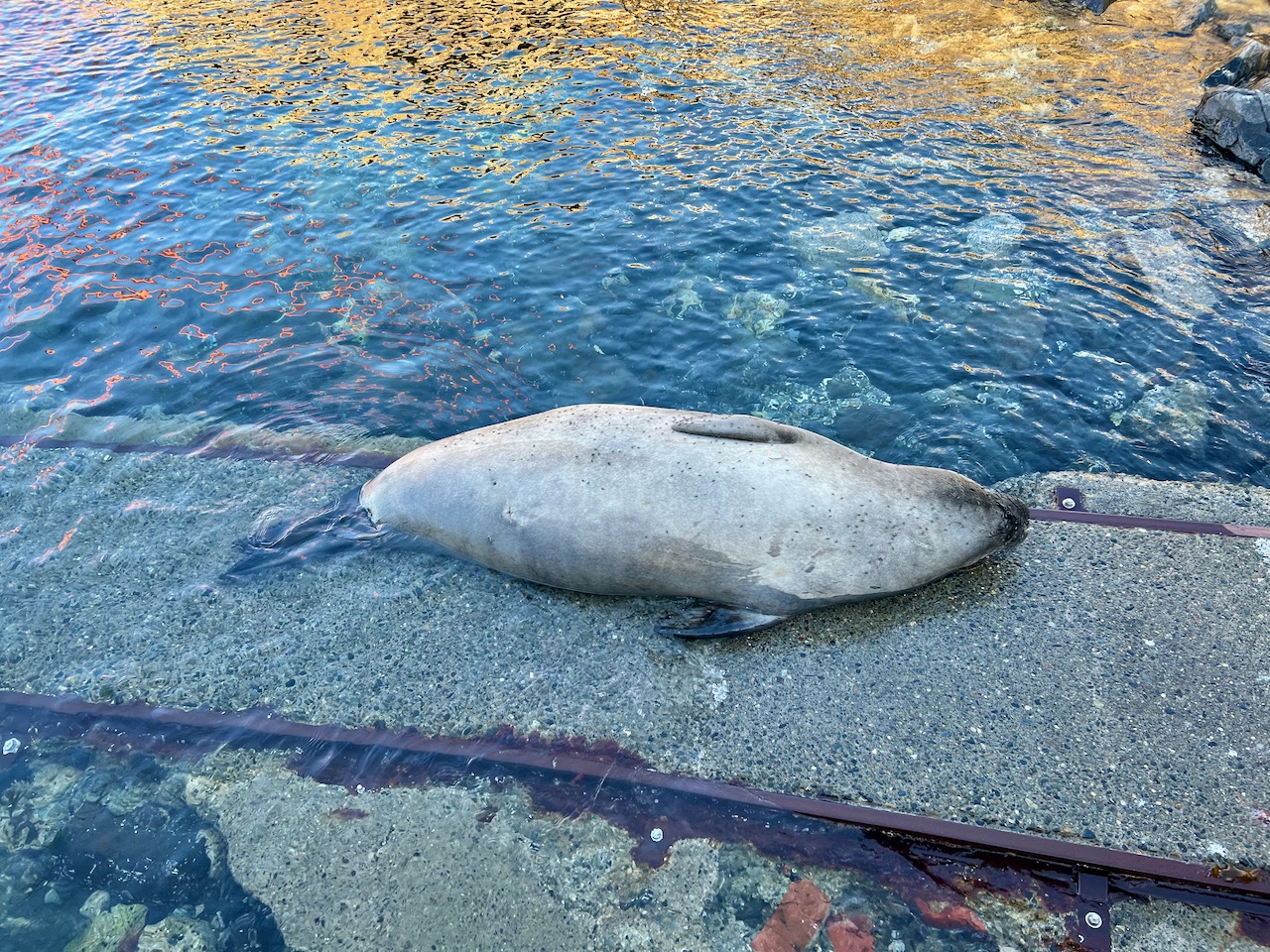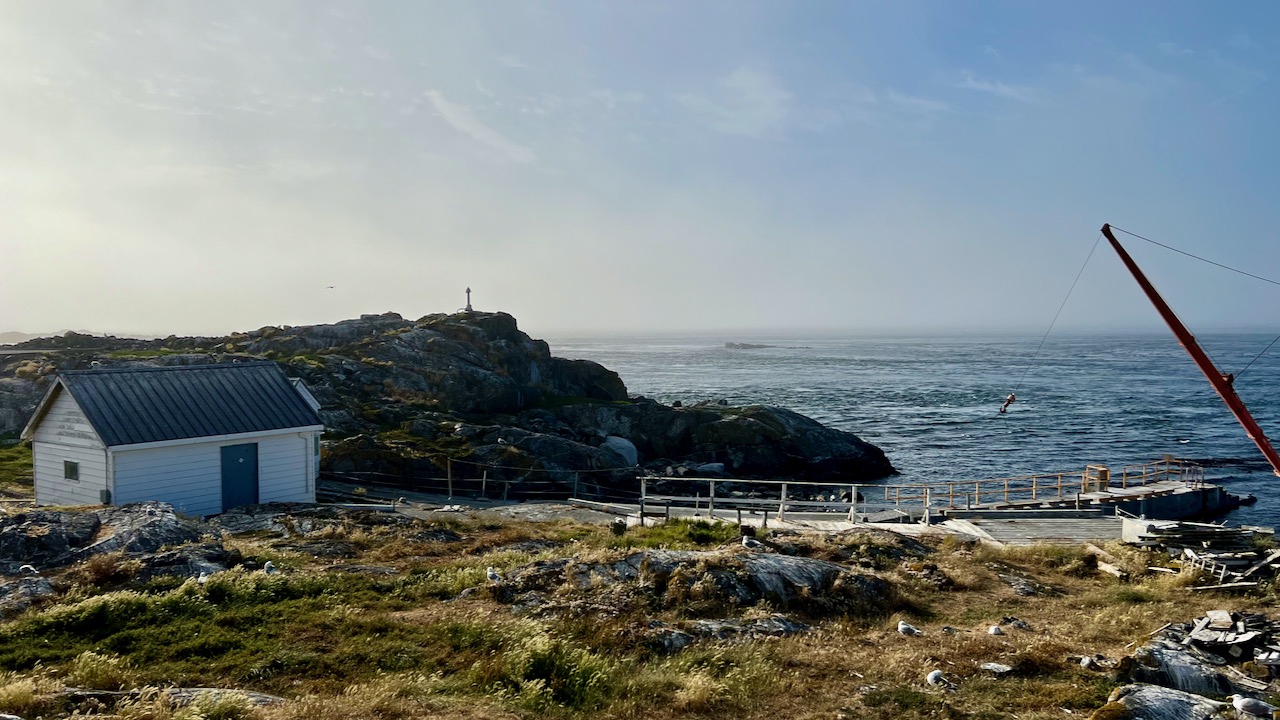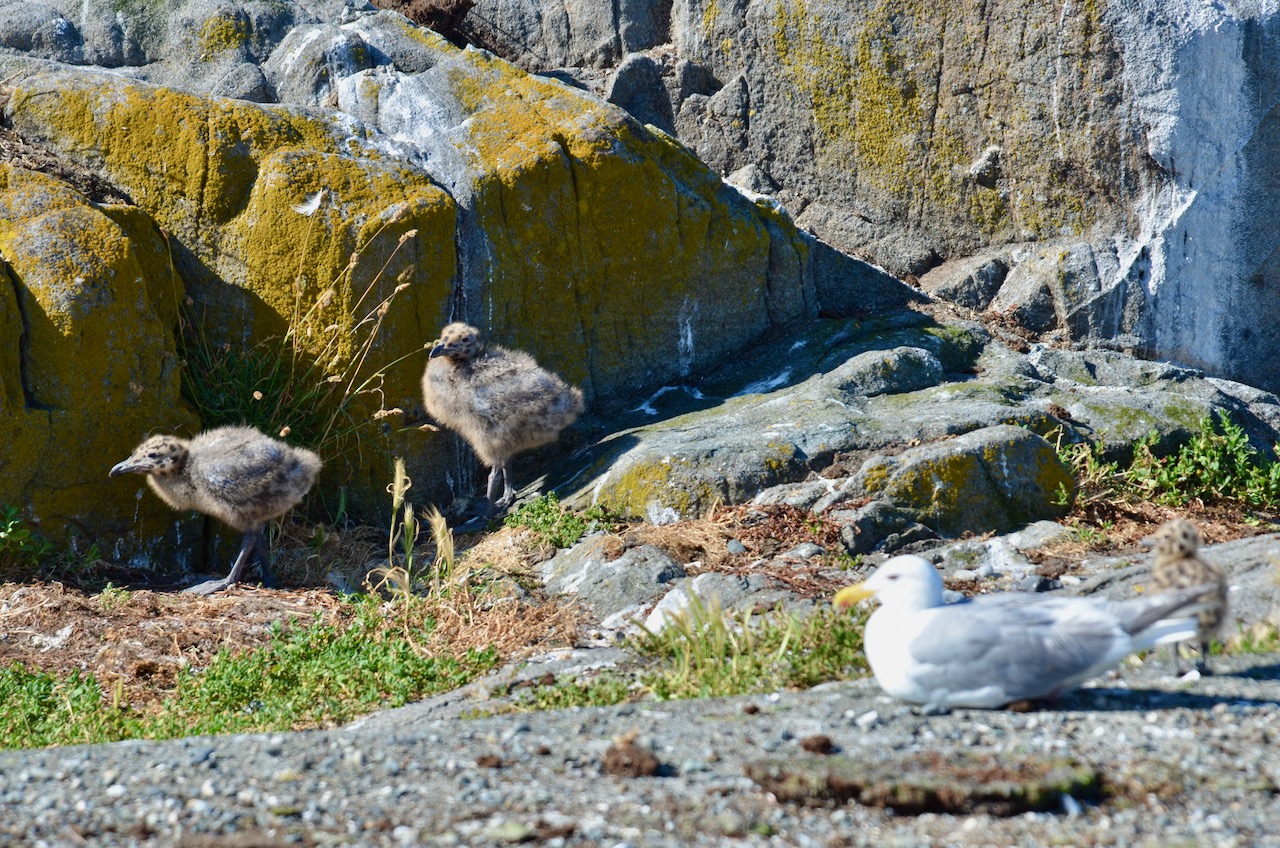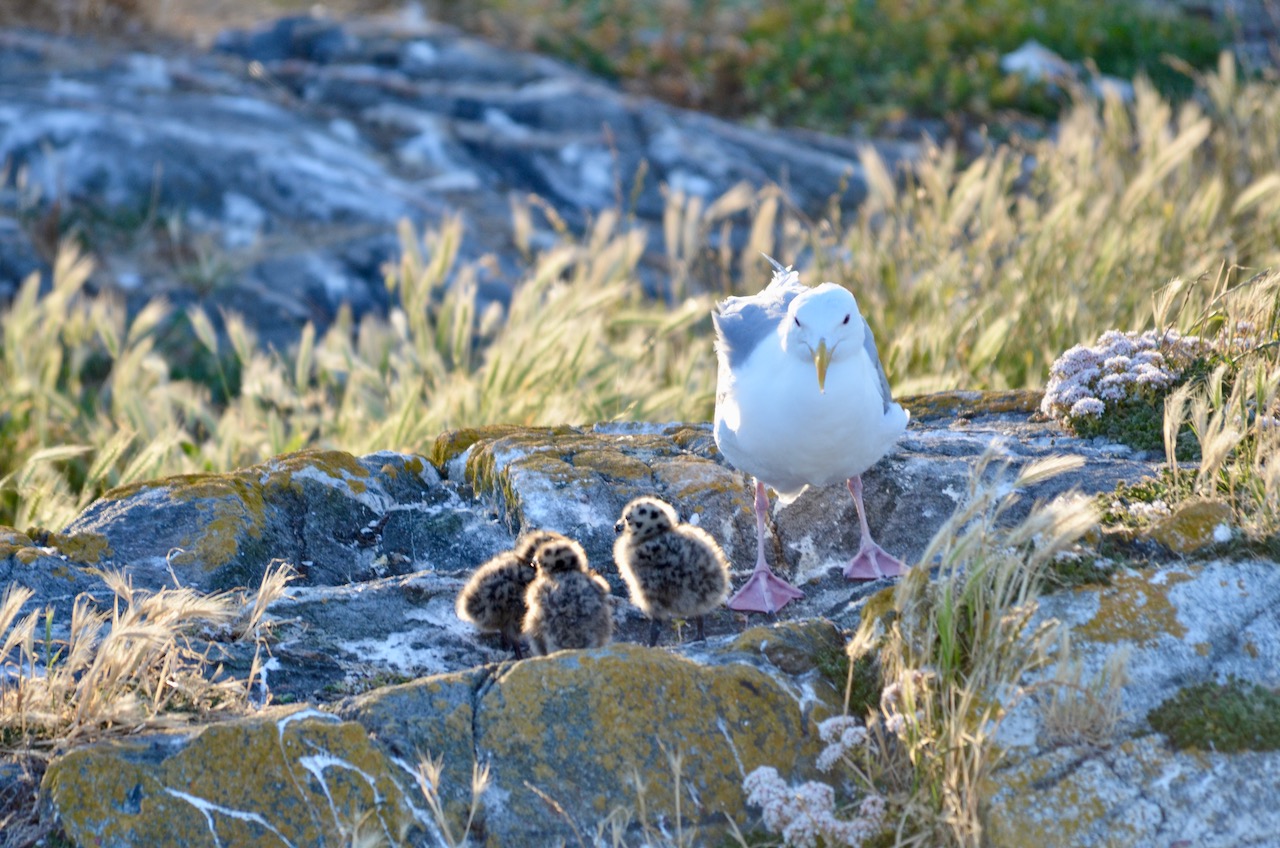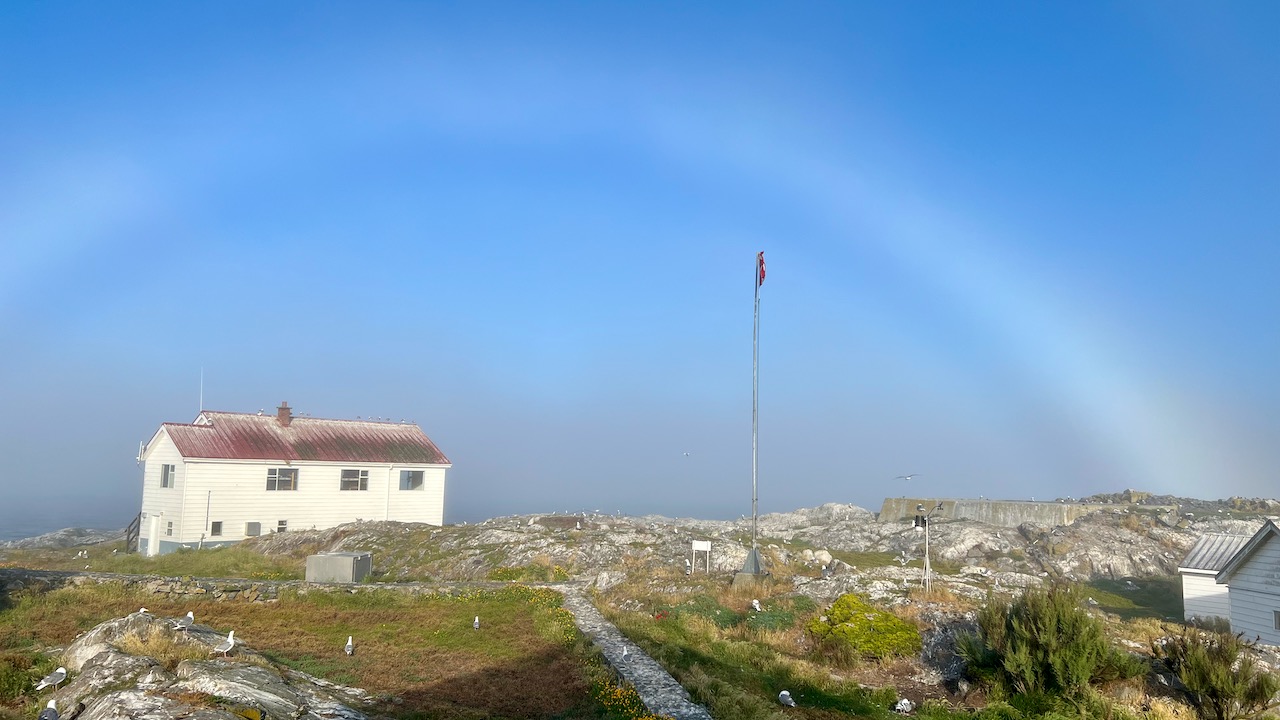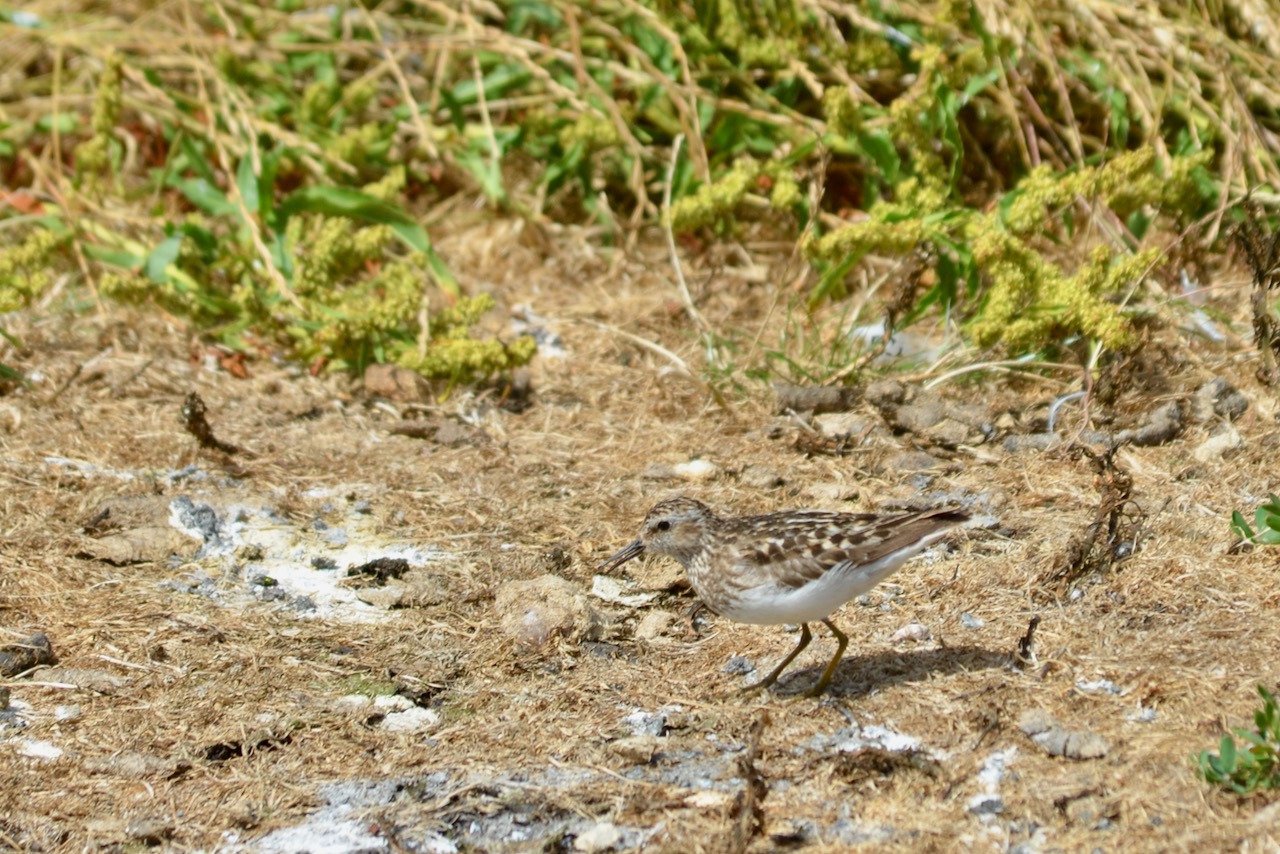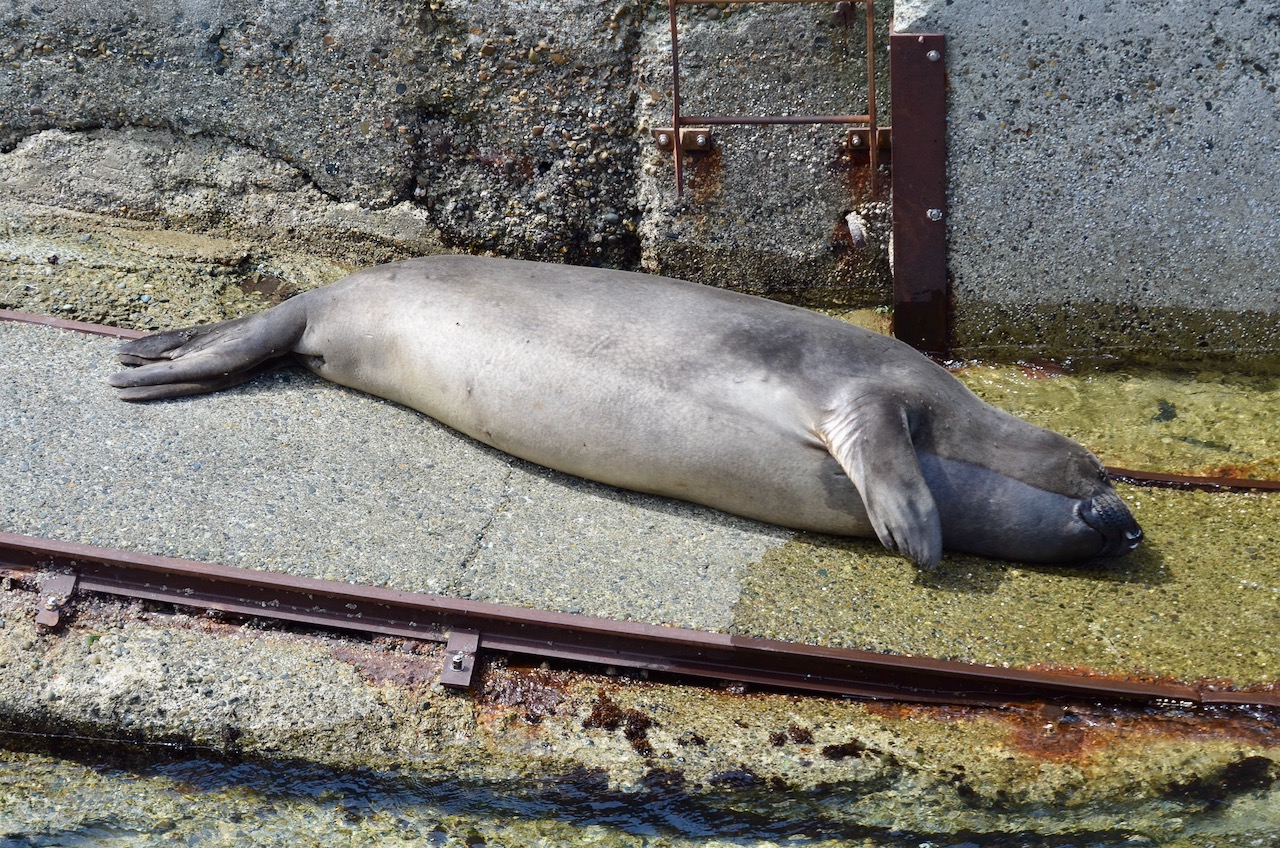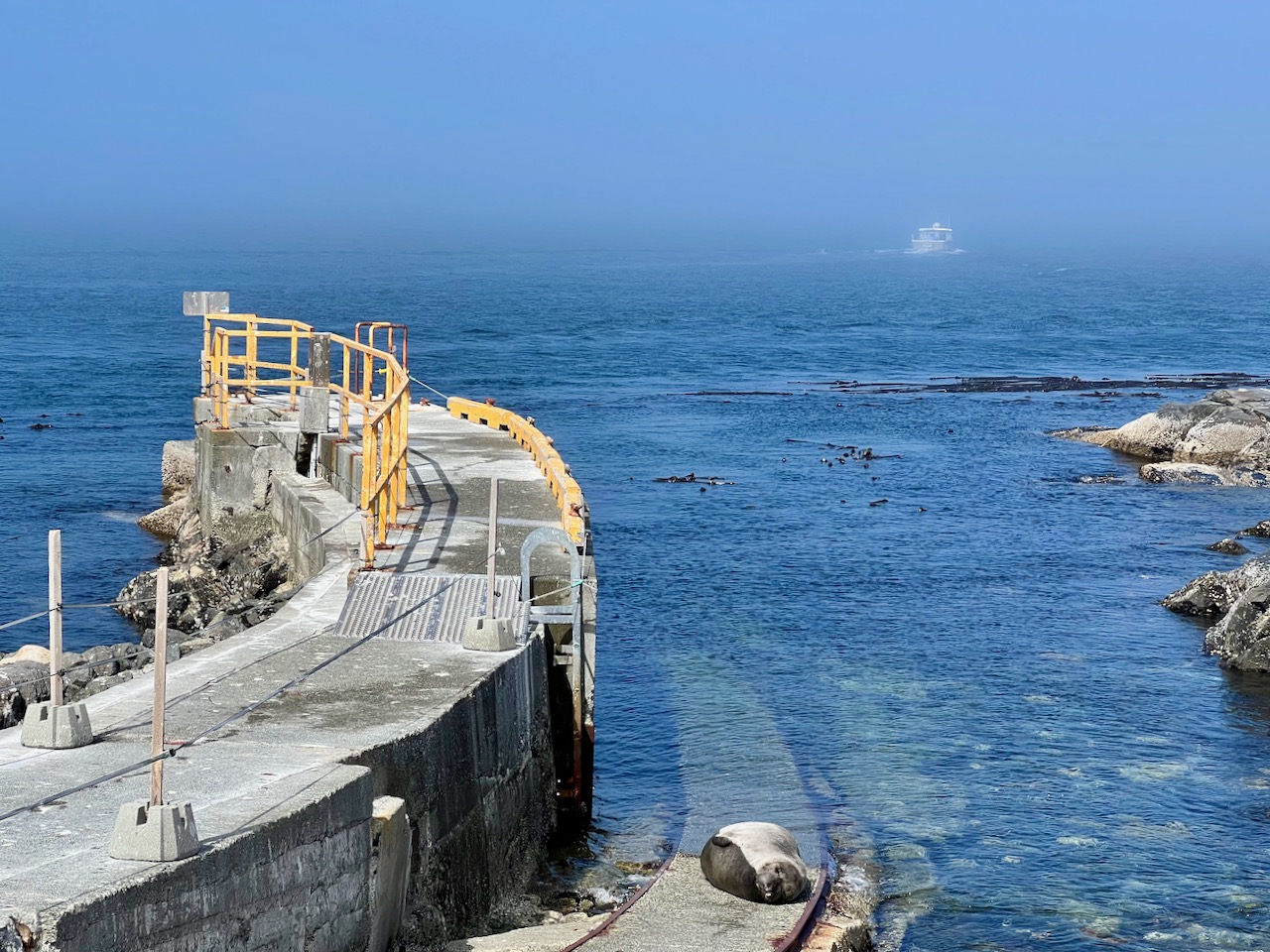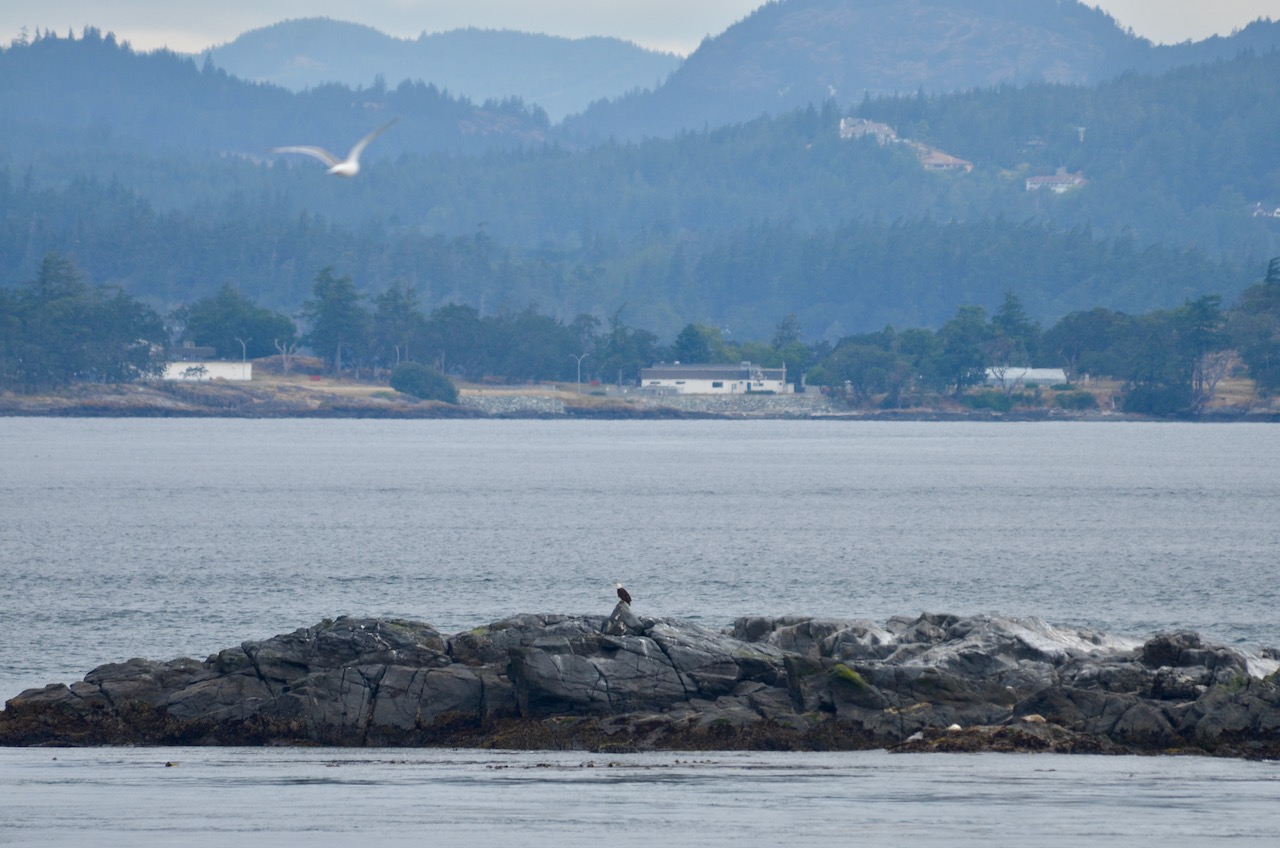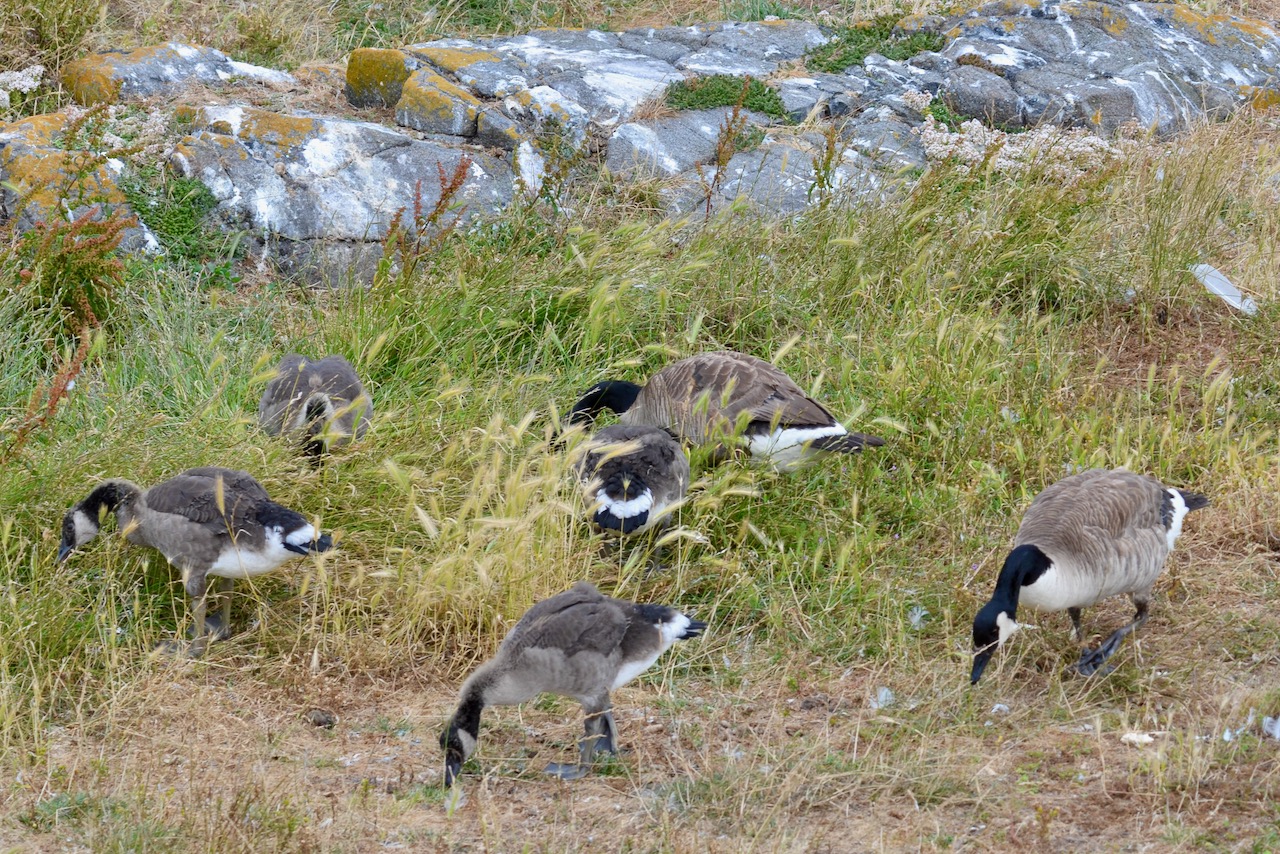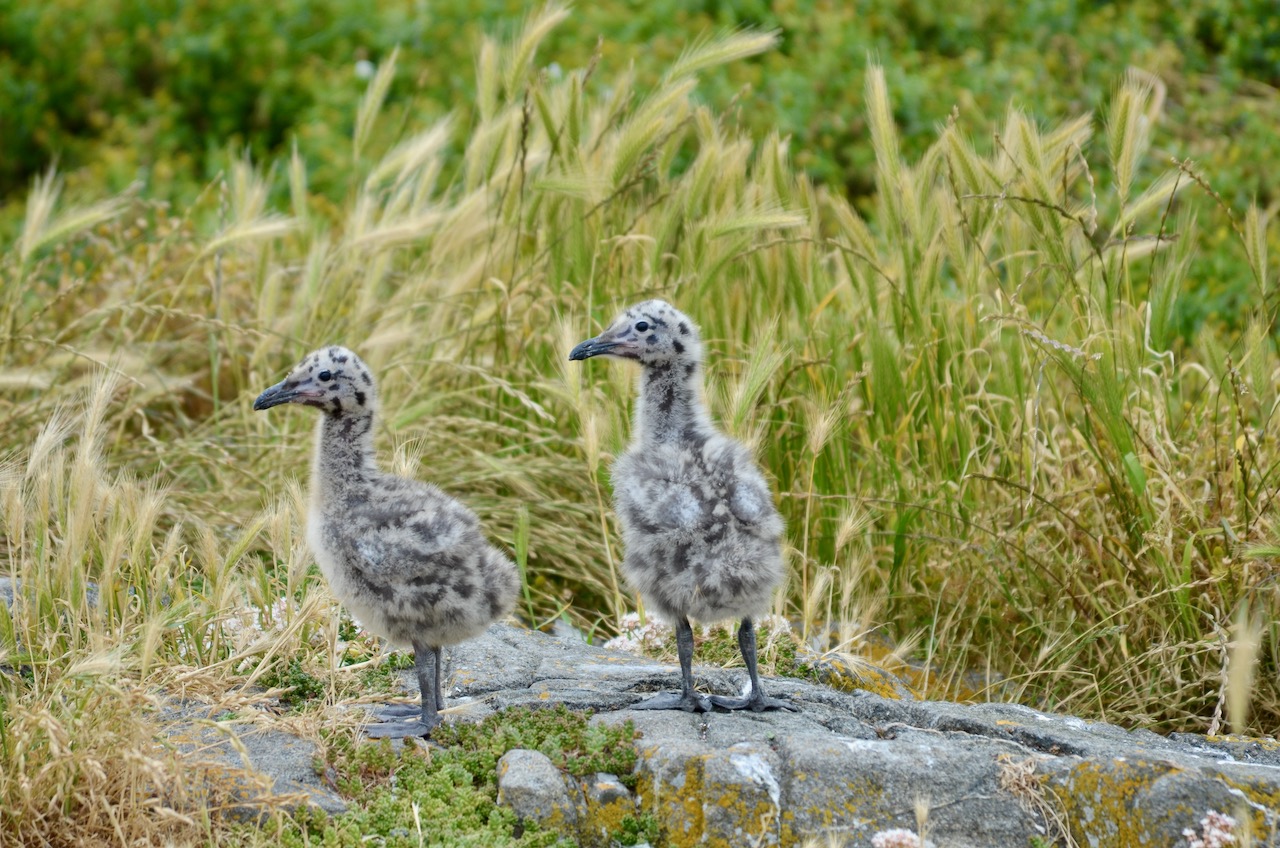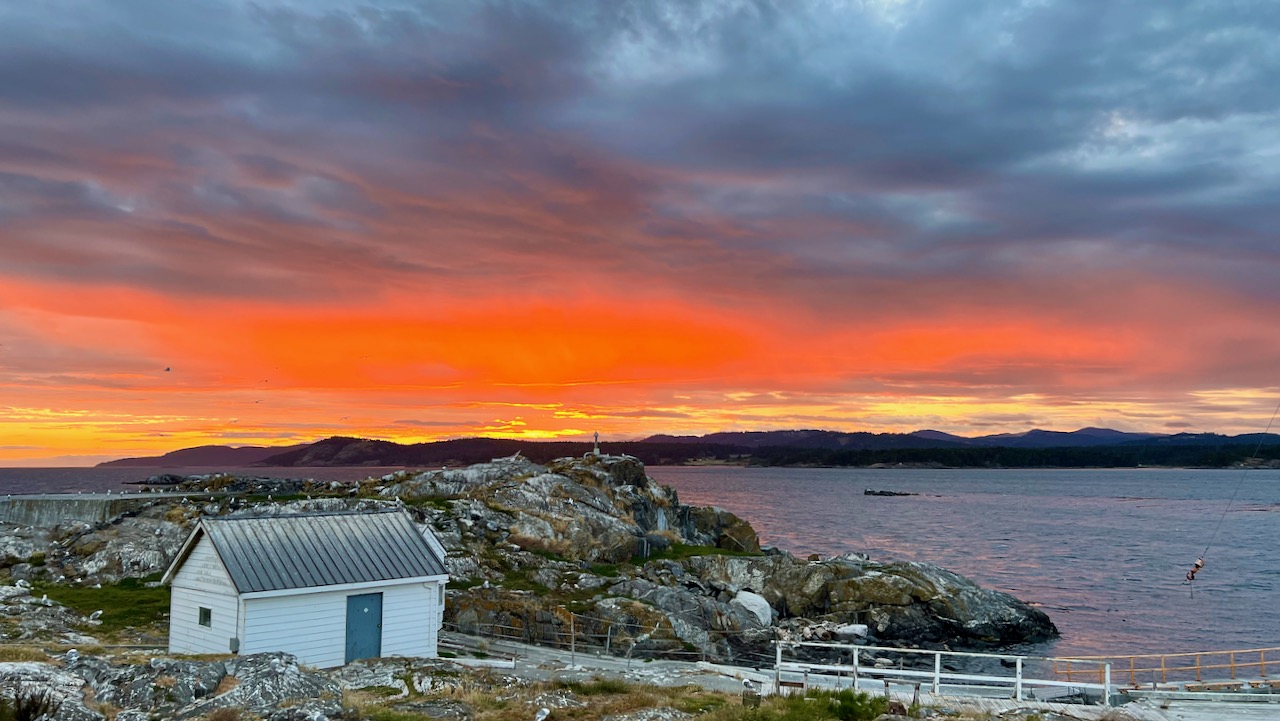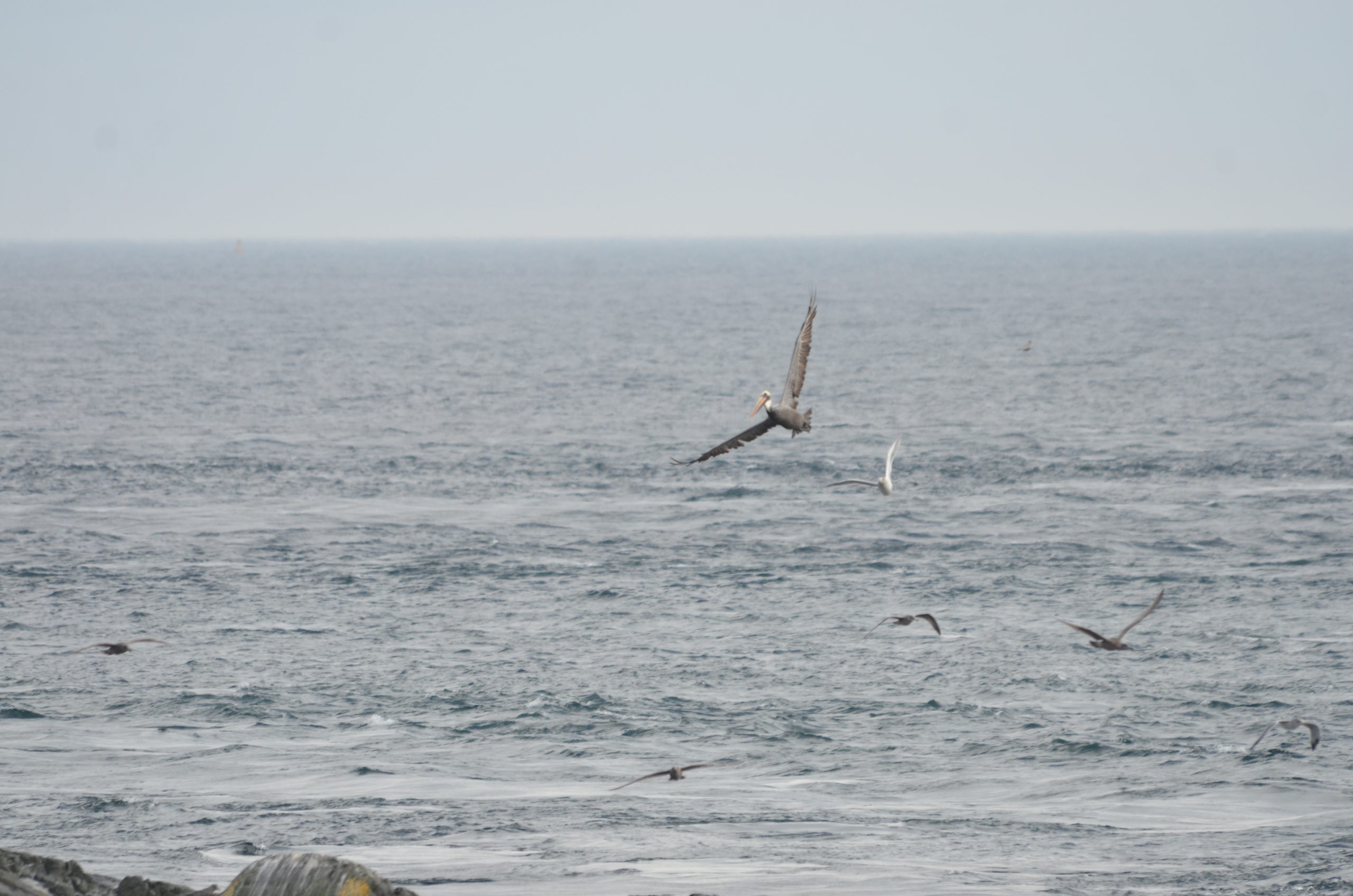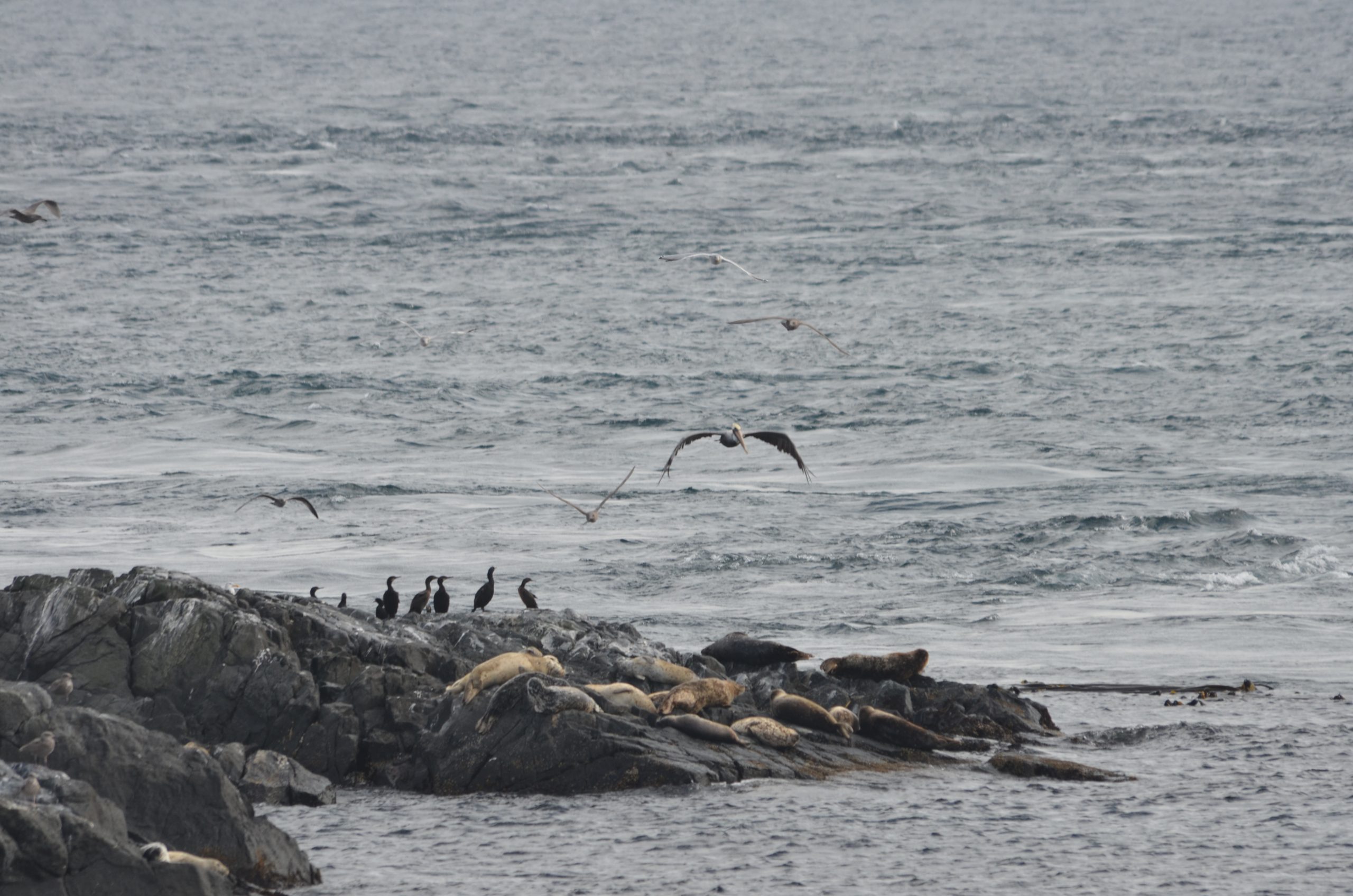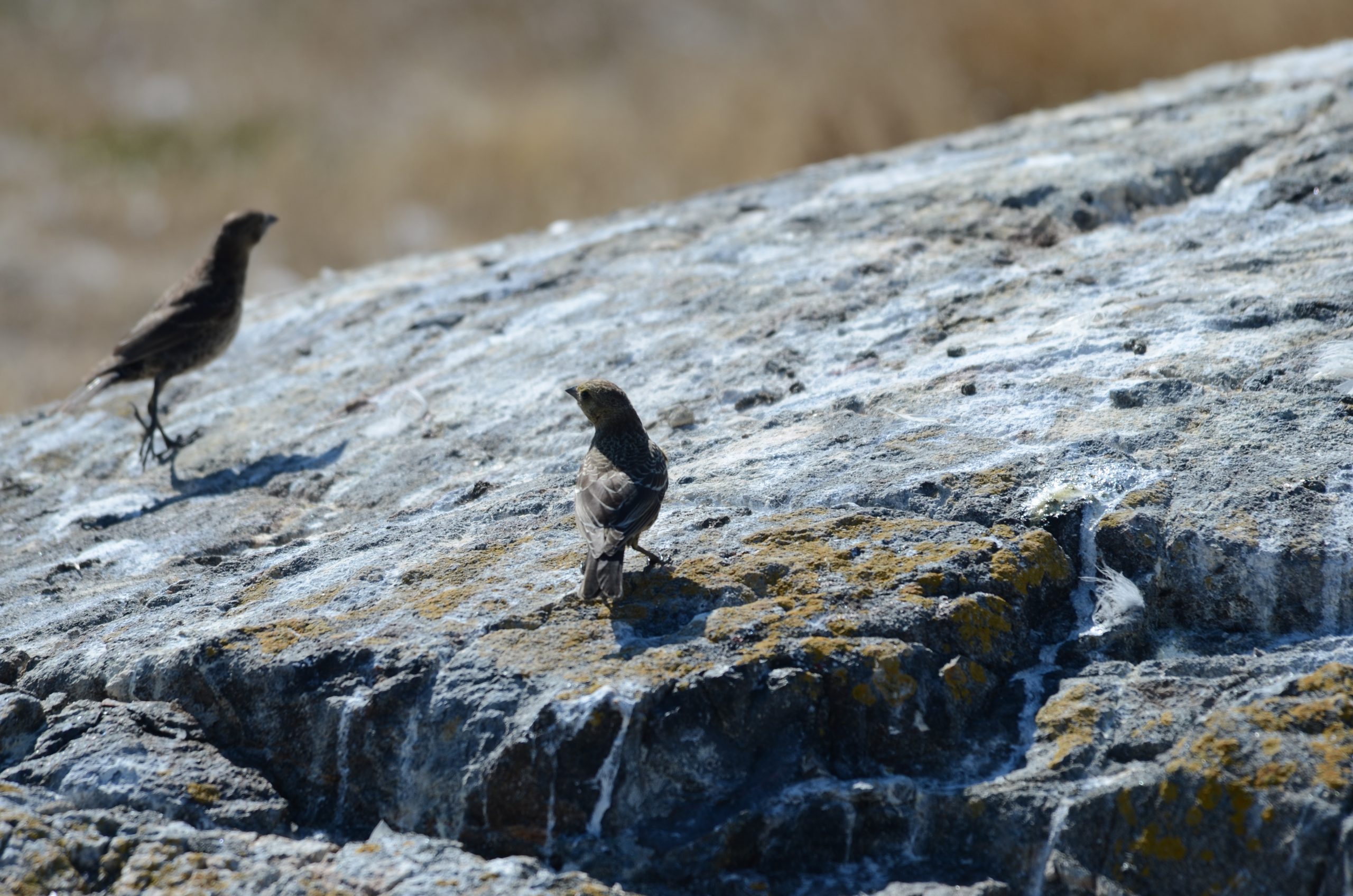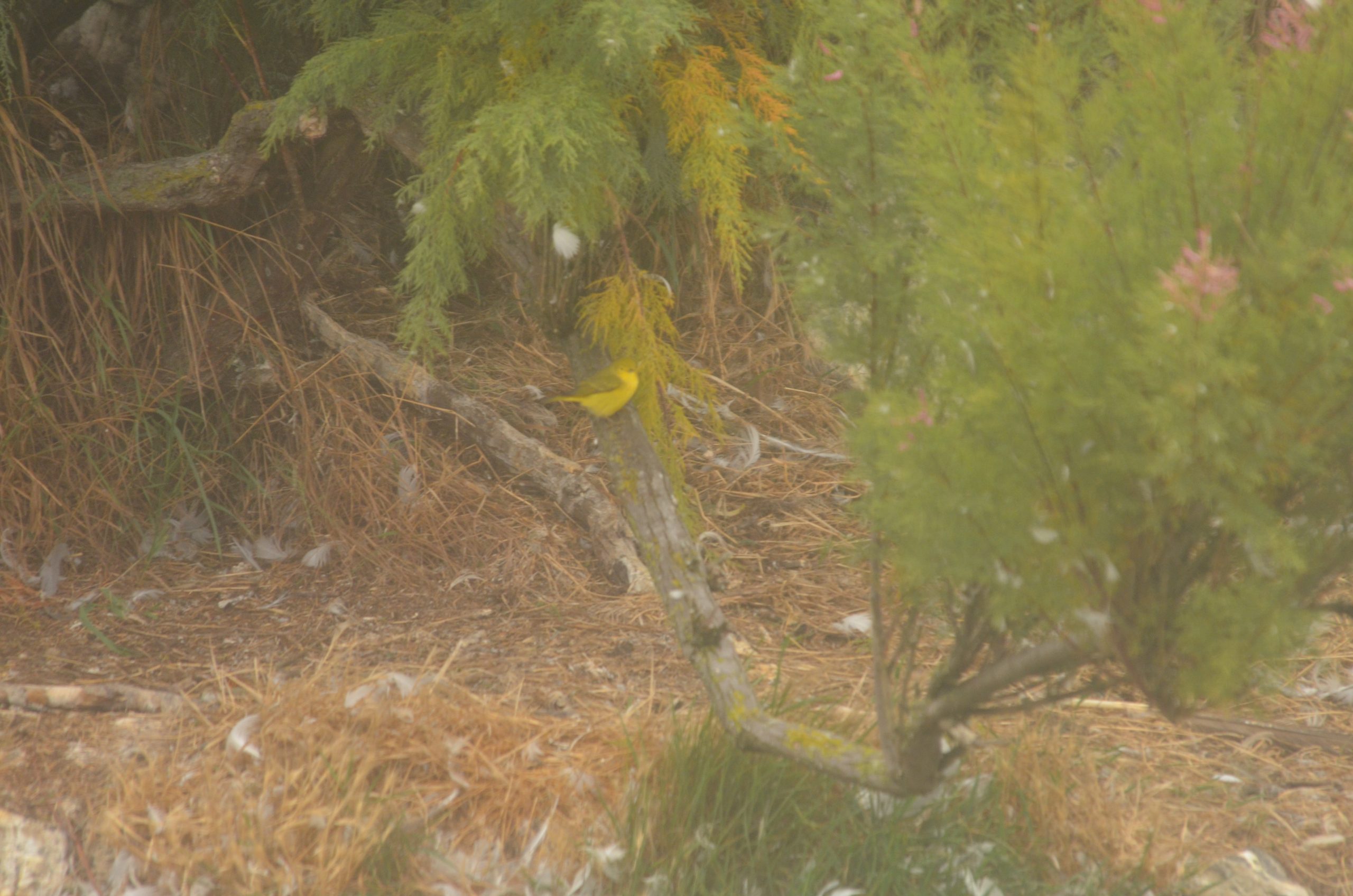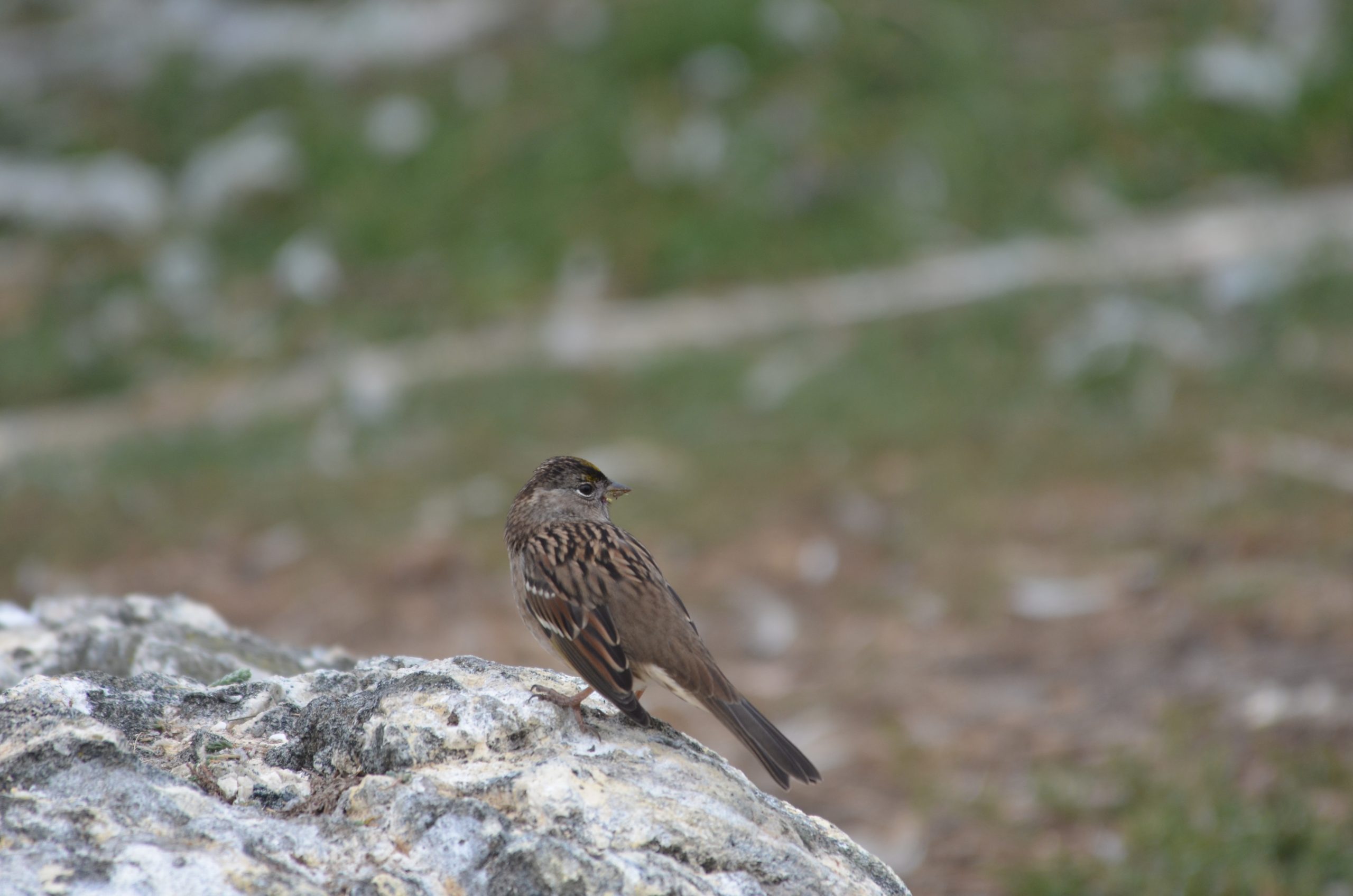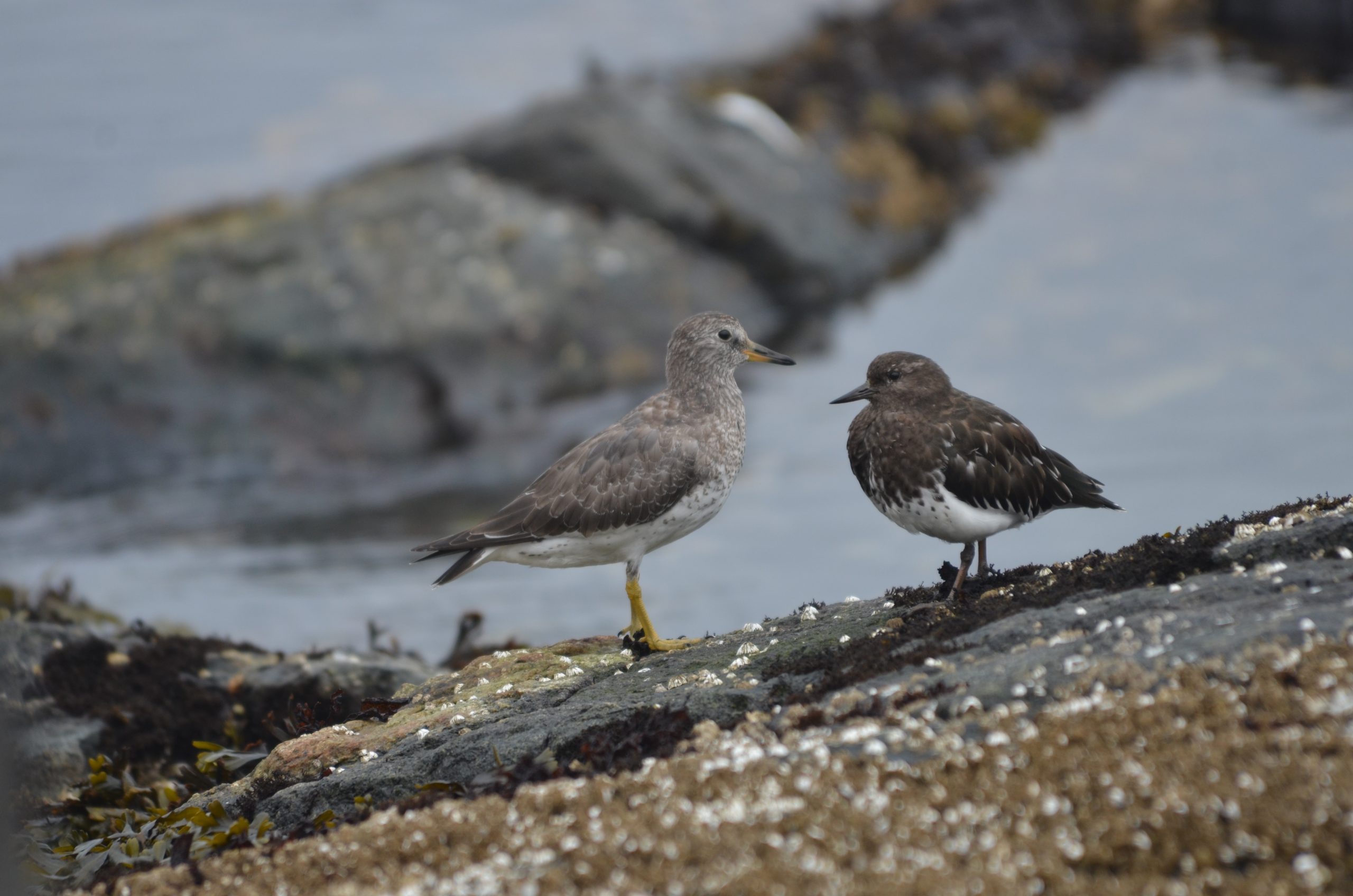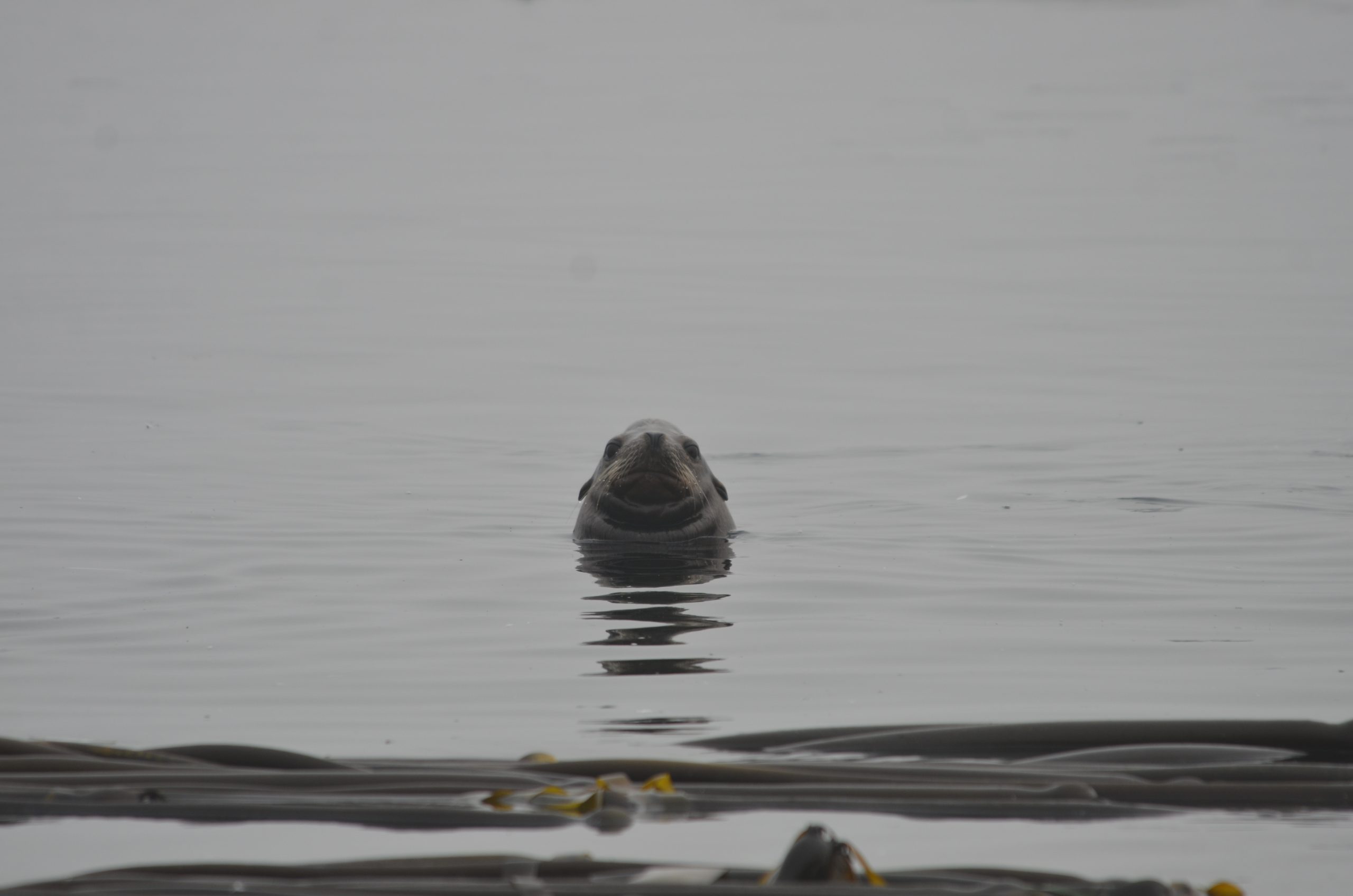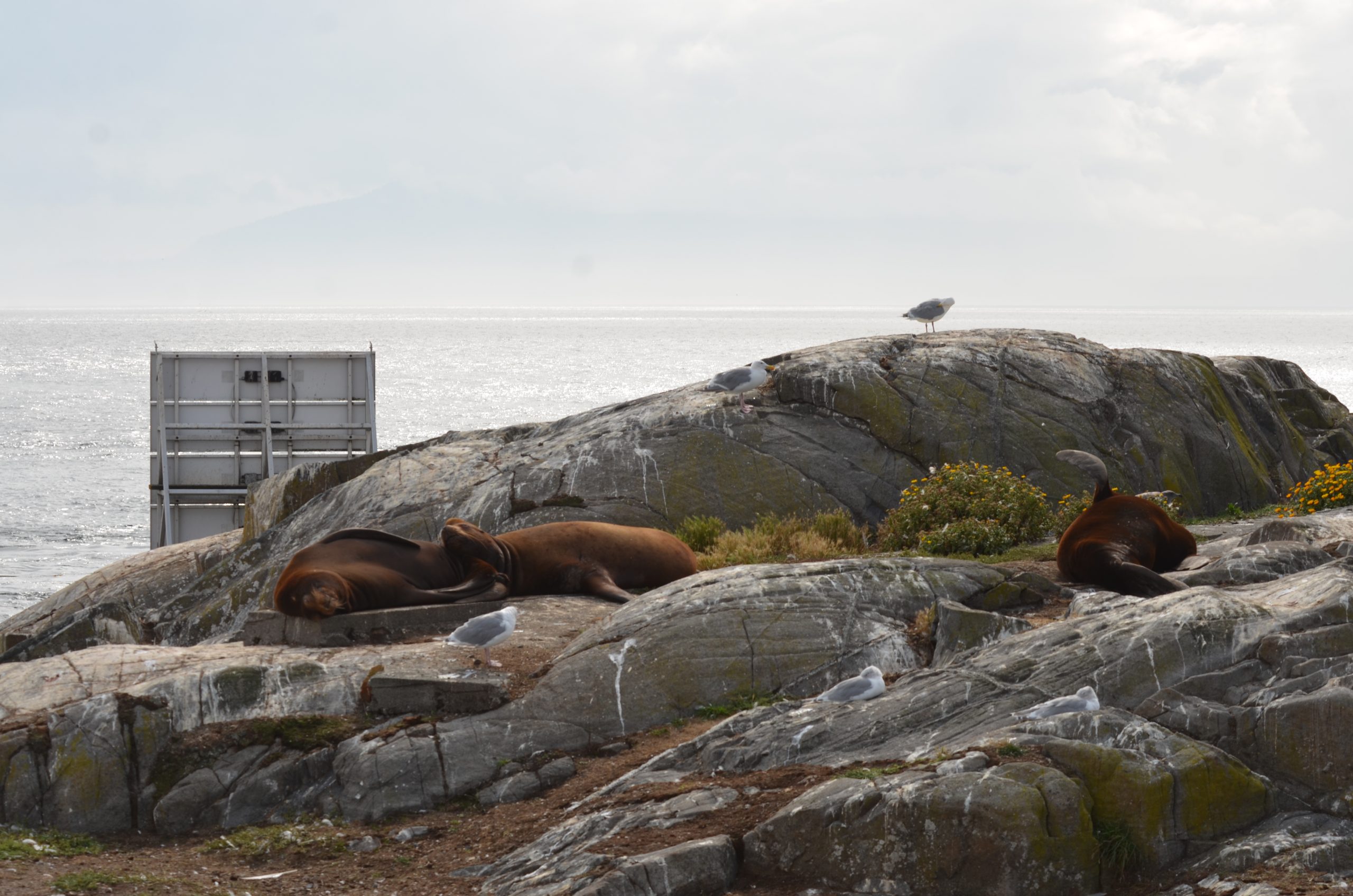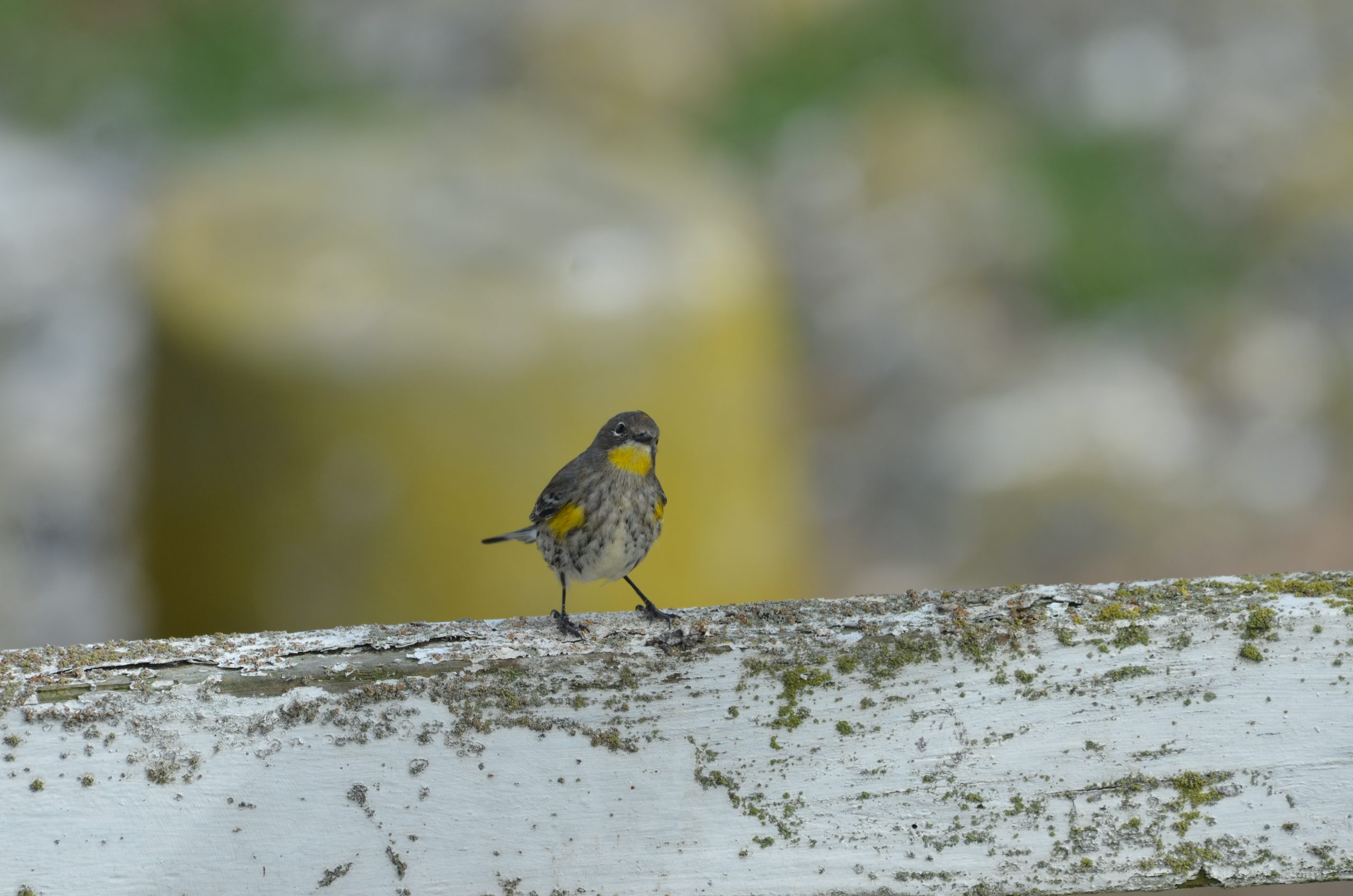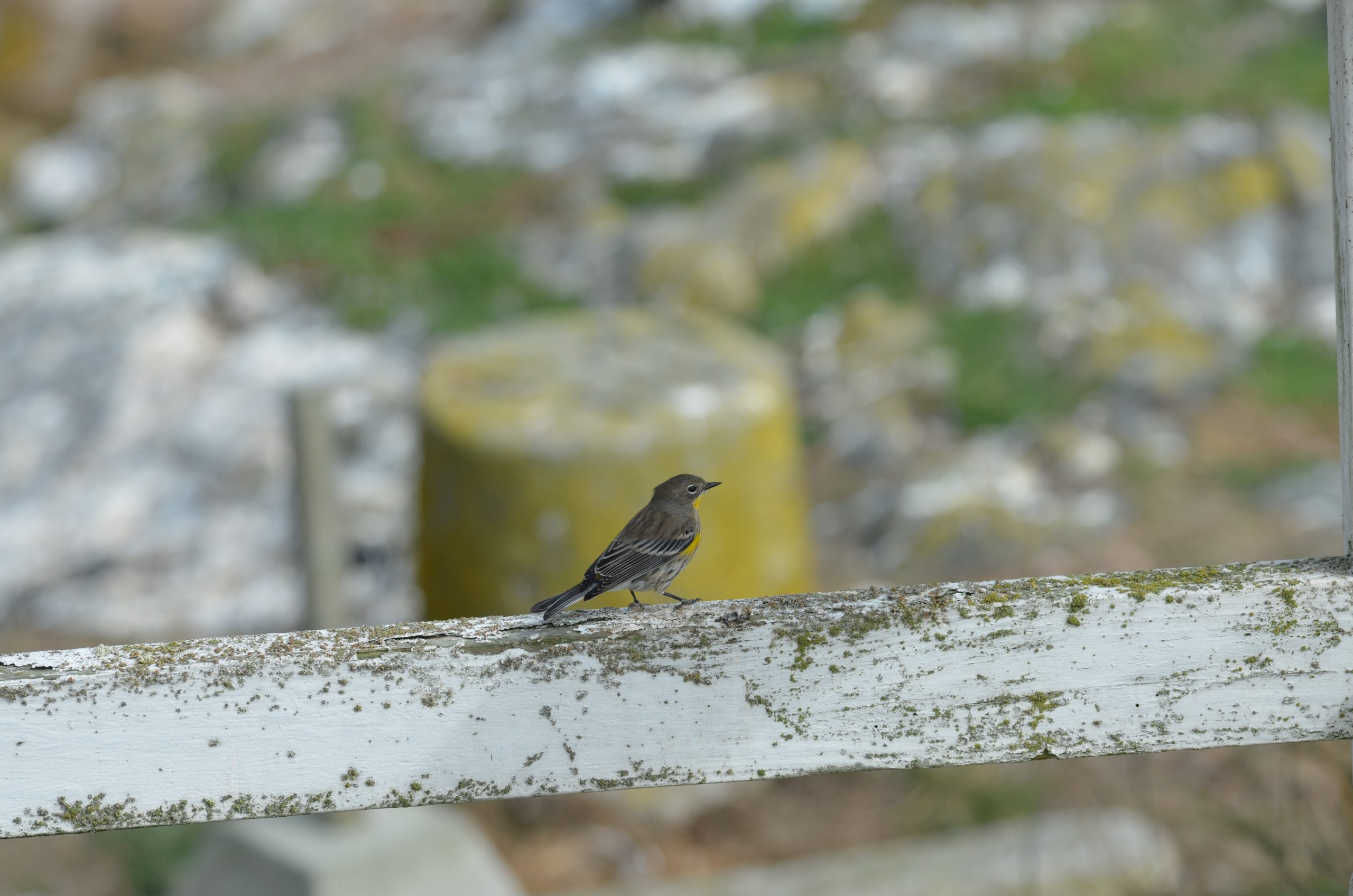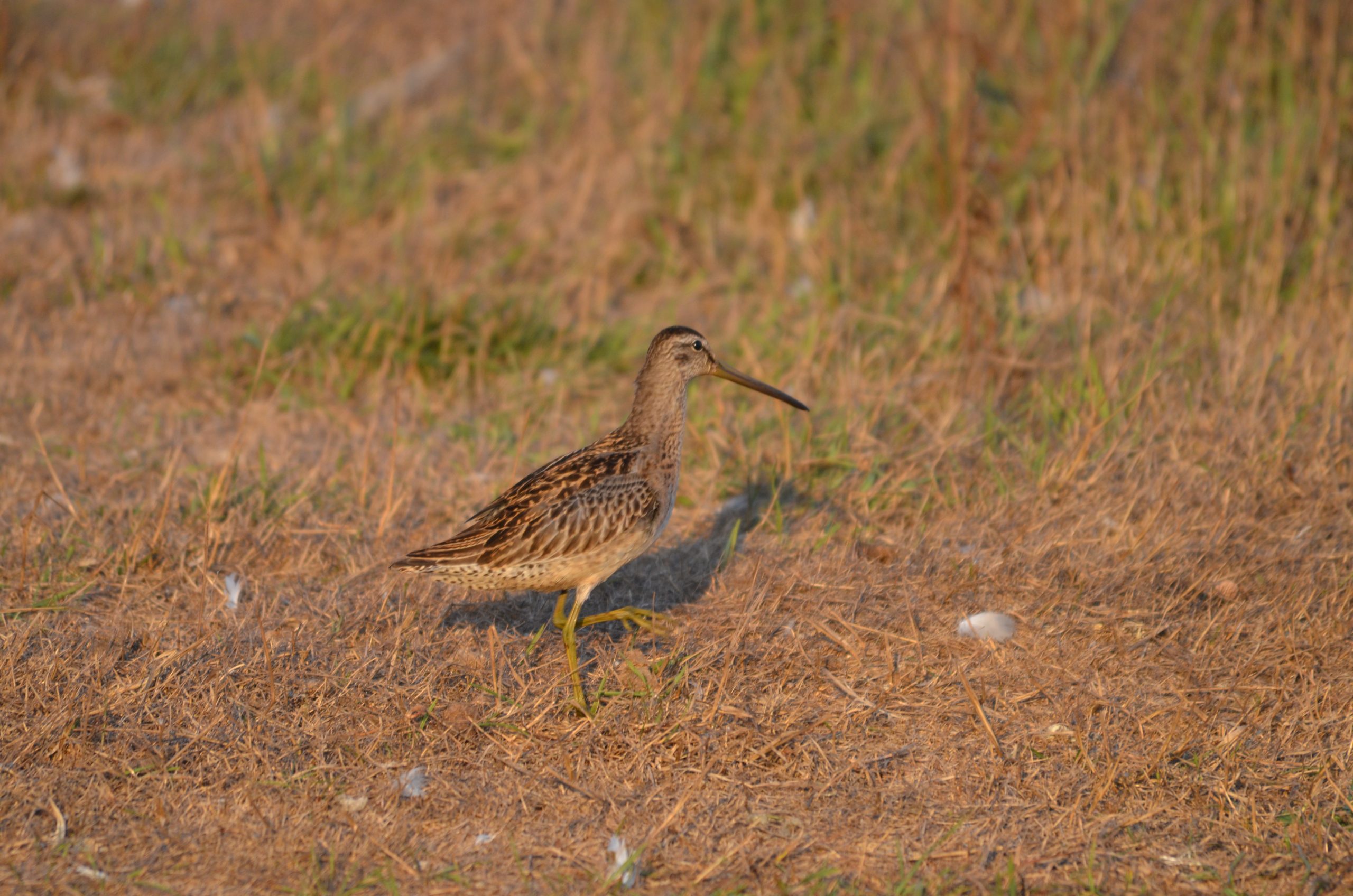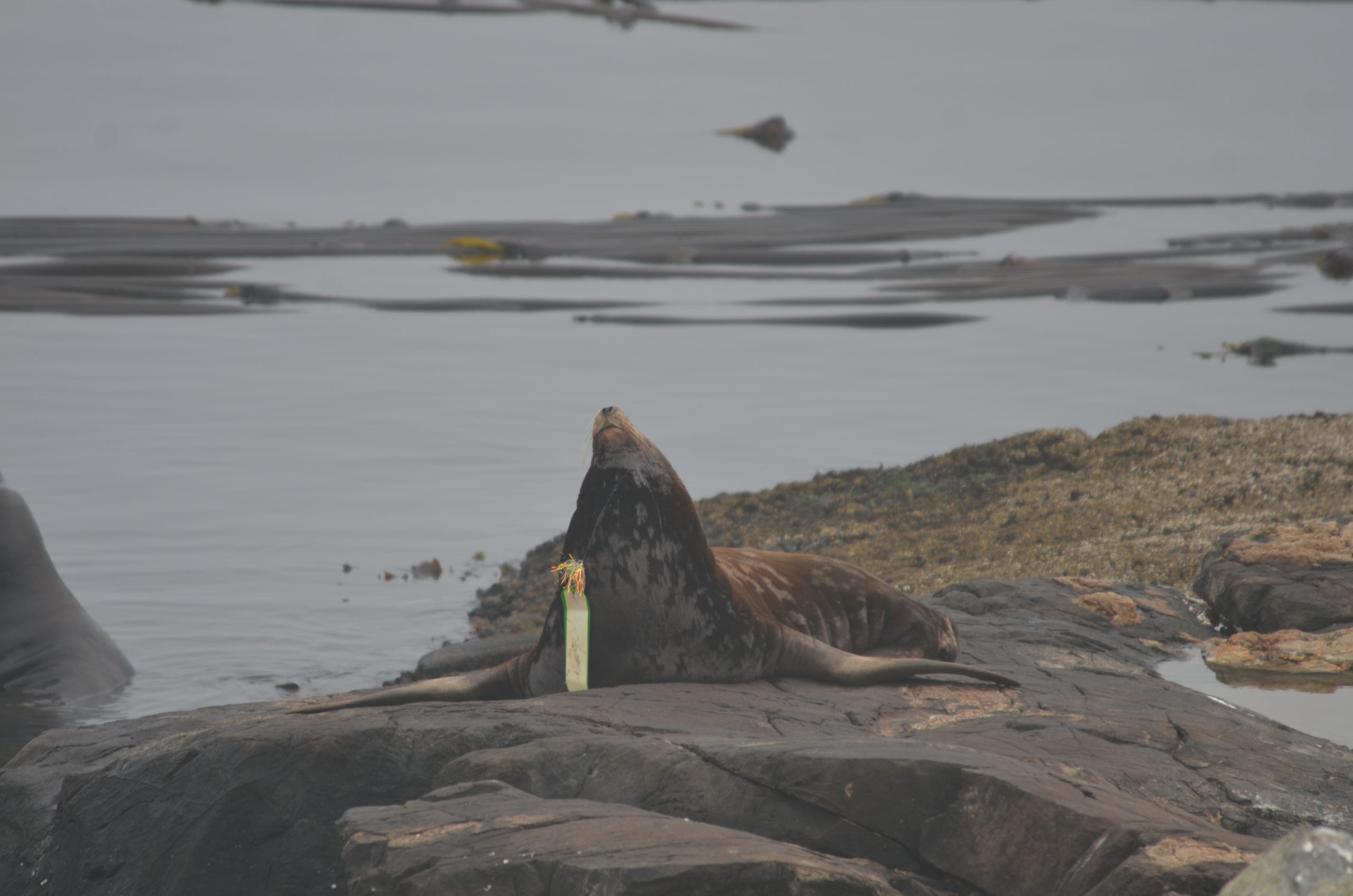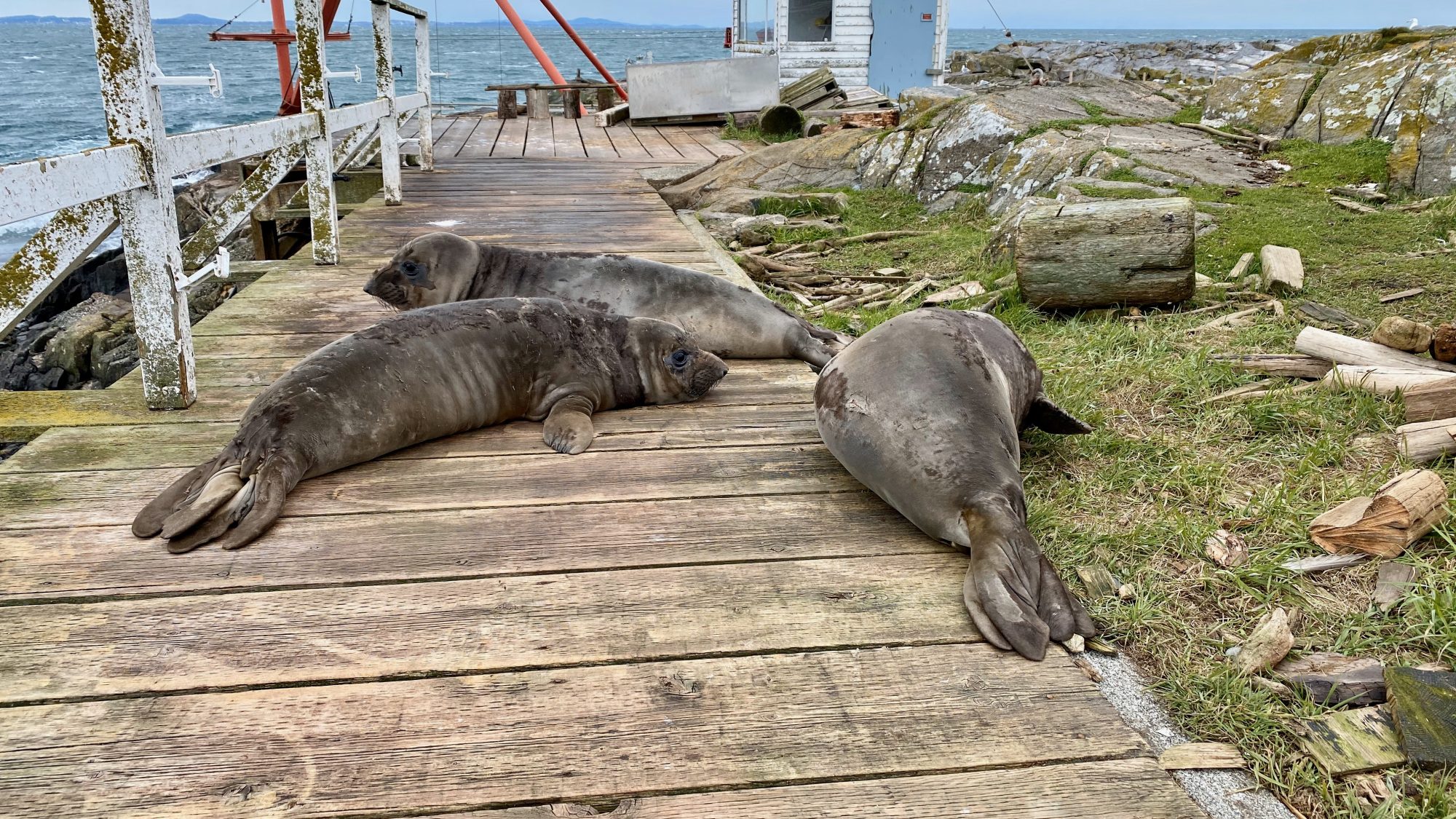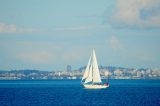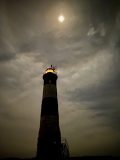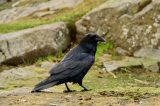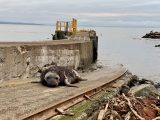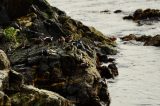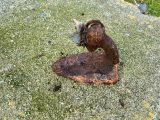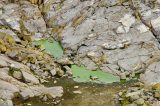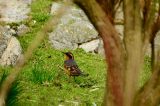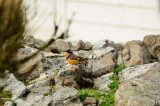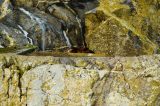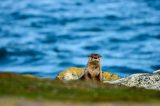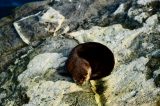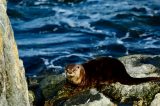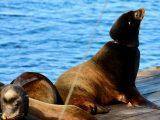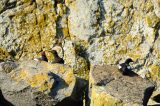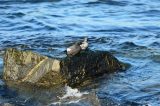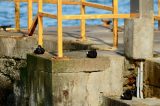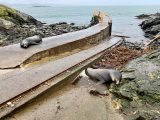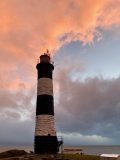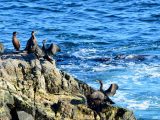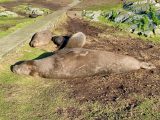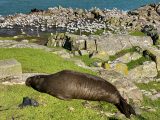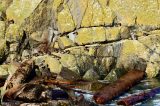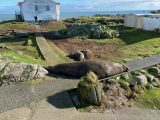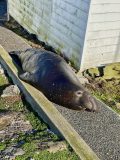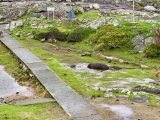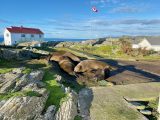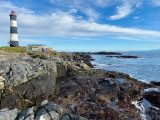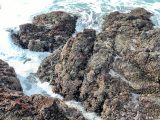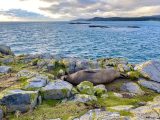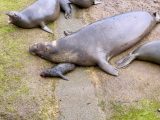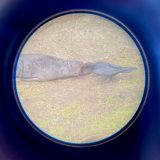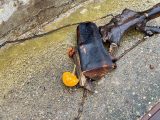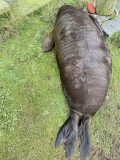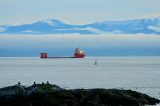Ecological Notes:
- An elephant seal swam up to the boat ramp at some point yesterday late afternoon or evening. When I went to do the seawater sample at 19:30, I spotted her sleeping at the water’s edge. As far as I can tell, she has been there ever since.
- See the photo gallery below for more ecological happenings from the past two days.
Weekly Census recorded on Wednesday, July 20:
It was not an ideal day to record the census, as it was quite foggy. Although, I had a window of less fog at around noon, when I could see all the islets that comprise Race Rocks and the water in between, so I was able to count the species from the lantern room of the lighthouse. I counted other species throughout the day as I walked around.
- Elephant Seal: 1
- Steller/Northern sea lions: 15
- Harbour seals: 125
- Bald eagles: 2 (1 juvenile and 1 adult)
- Canada geese: 9 (5 adults, 4 goslings)
- Black oystercatchers: 11 (8 adults, 3 chicks)
- Cormorants: 5
- Glaucous-winged gulls nesting on the main island: 229
- Glaucous-winged gull chicks: approximately 250 (It is hard to get an exact number due to their camouflage in the grass and hiding under their parents)
- Gulls not nesting (some glaucous-winged and some other species) on the south end of the main island and outer islands: 96
- Pigeon guillemots: 163
- Black turnstones: 2
- Western sandpiper: 3
- Fox sparrow: 1
Weather:
- Yesterday (July 19):
- Sky: Partly cloudy, fog in evening
- Wind: W 3-29 kts
- Sea: rippled, then up to 1′ chop in afternoon and evening
- Temperature Low 11oC, High 15oC
- Today (July 20):
- Sky: Fog overnight, a mixture of partly cloudy and fog throughout the day and into the evening
- Wind: W 12-30 kts
- Sea: rippled, then up 2′ chop in afternoon and evening
- Temperature Low 11oC, High 14oC
Visitors:
- 2 visitors from Pearson College to deliver supplies.
Facility Work:
- Scrubbed and squeegeed solar panels, routine tidying and checking infrastructure around the island.
Vessel Traffic:
- Many Canadian and American ecotour boats have been nearby and heading through the waters of the ecological reserve.
Here are photo highlights from the past two days. Click on the photos for larger views and captions.
- Yesterday evening, when I went to sample the seawater salinity and temperature, I spotted the new elephant seal arrival on the island.
- Fog rolling in last evening. Normally there would be land over there.
- Look how big some of the gull chicks are getting!
- While other younger chicks are still little balls of fluff.
- A fog rainbow to the west this morning.
- A western sandpiper searches for food in the centre of the island.
- The elephant seal spent the day on the boat ramp, perhaps recovering from a long ocean journey.
- Pearson’s boat Second Nature disappears into the fog at 15:45, after delivering supplies. The elephant seal remained on the boat ramp unfazed while we used the jetty.
